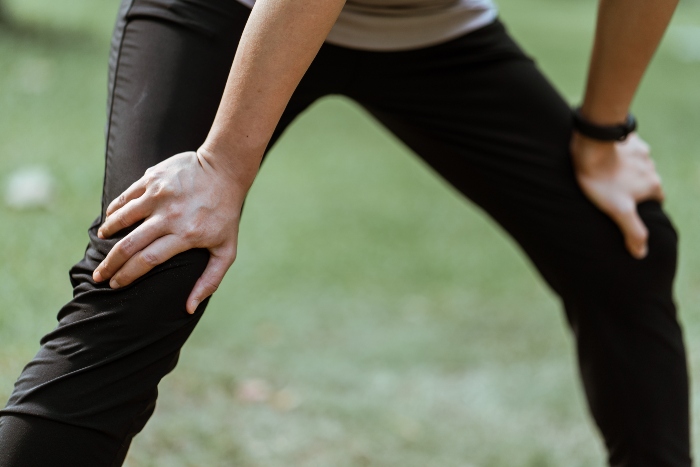Building strong knees requires a combination of exercises and lifestyle habits that promote joint health. Here are some tips on how to build strong knees.

Strengthen your Leg Muscles
Strong leg muscles help support the knee joint, which can reduce the risk of knee injuries. Exercises that target the quadriceps, hamstrings, and calf muscles can help strengthen the legs. Examples include squats, lunges, leg presses, and calf raises.
Improve your Flexibility
Stretching exercises can help improve flexibility, which can also reduce the risk of knee injuries. Try stretching your quadriceps, hamstrings, and calf muscles regularly.
Use Proper Form when Exercising
Using proper form when exercising can help prevent knee injuries. For example, when performing squats, make sure your knees are aligned with your toes, and your weight is on your heels.
Maintain a Healthy Weight
Being overweight can put extra stress on the knees, which can increase the risk of knee injuries. Maintaining a healthy weight can help reduce this stress and improve knee health.
Wear Proper Footwear
Wearing shoes that fit well and provide adequate support can help reduce the impact on the knees when exercising or engaging in physical activity.
Cross-Train
Incorporating a variety of activities into your exercise routine can help reduce the risk of overuse injuries. Consider incorporating low-impact activities, such as swimming or cycling, into your routine to give your knees a break from high-impact activities.
Low-Impact Cardio
Activities like walking, cycling, and swimming can help improve your overall fitness and strengthen your knees without putting too much stress on the joint. These low-impact exercises can also help with weight management, which can reduce the load on your knees.
Rest and Recover
Giving your knees time to rest and recover after exercise or physical activity can help prevent knee injuries. Make sure to take breaks and allow for proper recovery time between workouts.

Stretch Regularly
Stretching can help improve flexibility and reduce the risk of injury. Focus on stretching the muscles in the front and back of your thigh, as well as your calf muscles.
Improve your Flexibility
Tight muscles can put extra strain on the knee joint and increase your risk of injury. Incorporate stretching exercises into your routine to help improve your flexibility, especially in your quads, hamstrings, and calves.
Warm Up and Cool Down
Before any exercise, it’s important to warm up your muscles and joints to reduce the risk of injury. This can include light cardio, stretching, or foam rolling. Similarly, cool-down exercises like stretching and foam rolling can help ease any soreness and improve recovery after your workout.
Practice Good Posture
Poor posture can put extra stress on your knees. Make sure to stand up straight with your shoulders back, and avoid slouching or leaning forward.
Use Strength Training Exercises for Knees
There are several strength training exercises that you can do to help strengthen your knees.
Avoid Overuse
Repetitive motions, such as running or jumping, can put a lot of stress on your knees. Try to mix up your activities to avoid overuse, and take breaks if you start to feel pain or discomfort.
Remember, building strong knees is a gradual process that requires consistency and patience. Consult with a doctor or physical therapist if you have any concerns or underlying medical conditions that may affect your ability to exercise.

